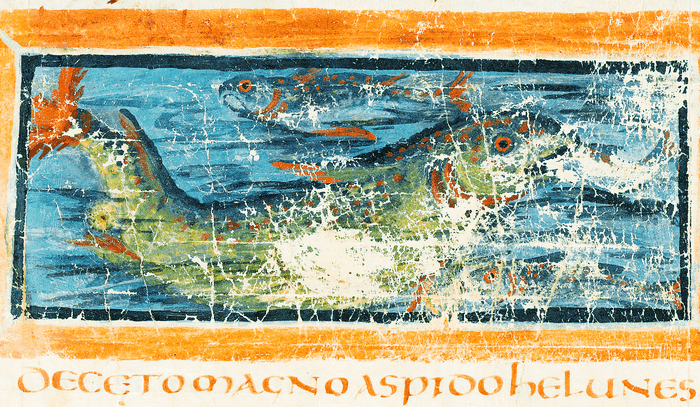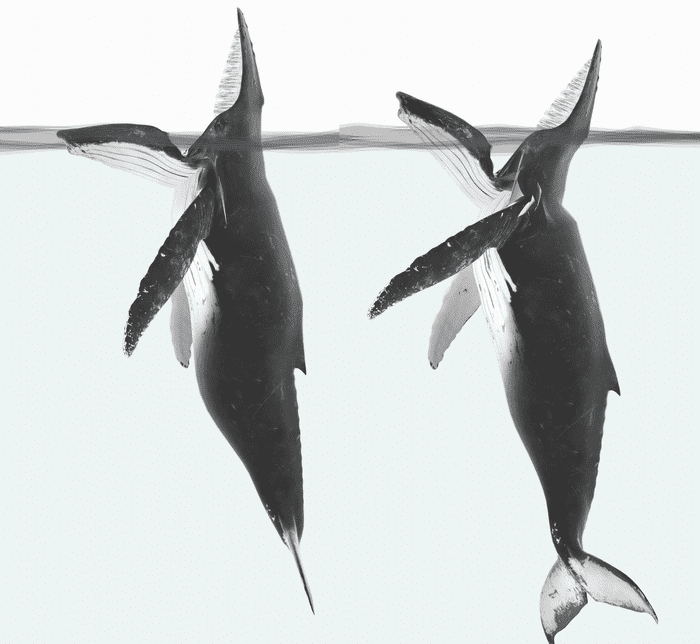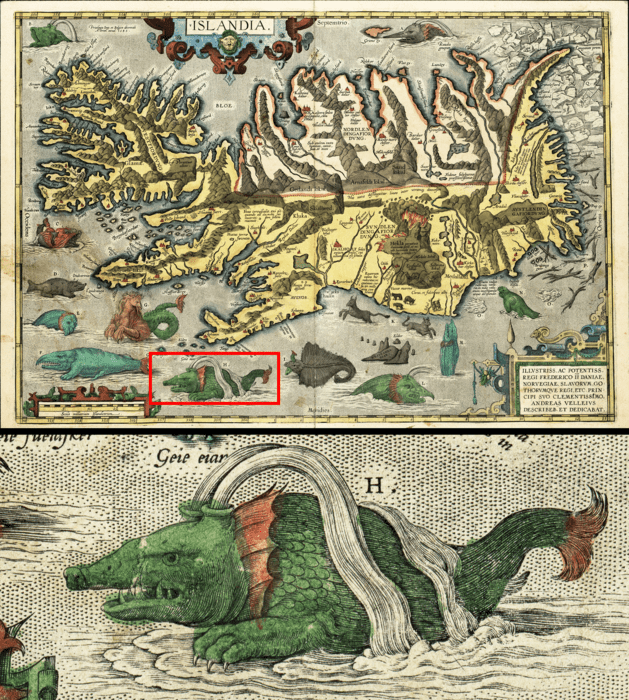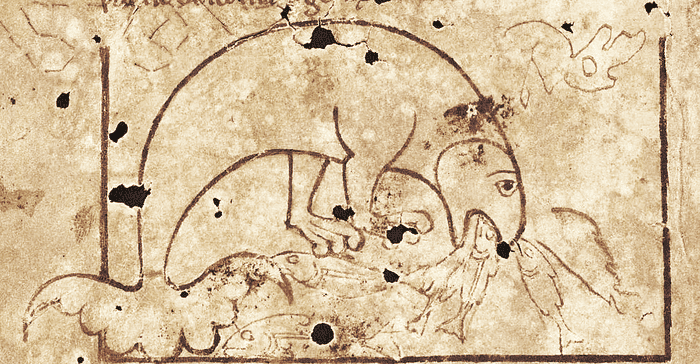
Medieval accounts of sea creatures may have described a peculiar trap feeding strategy among whales that was only documented by scientists in 2011, according to new research from Australia. The findings shed light on the origins of medieval myths about sea monsters and suggest that whales have been using this strategy for at least two millennia.
“This is a really interesting case of multidisciplinary research, where we can bring evidence from the ancient past to bear on marine biology, to provide the kind of insights that would not be possible through any other source. It suggests that this behavior, although it was only recorded in 2011, may have been practiced by whales a long time ago,” lead author Dr. John McCarthy, a maritime archaeologist at Flinders University, told ZME Science.
Not so new after all

The trap feeding strategy involves whales opening their jaws at right angles while staying near the surface of the water, waiting for scores of fish to swim right in. The fish mistake the whales for a safe haven from predators and don’t realize they are entering a trap. The strategy was captured in a viral video in 2021 showing a hungry Eden’s whale trap feeding in the Gulf of Thailand, but its prevalence before modern technology remained unknown until recently.
Sea monsters have always populated European medieval and renaissance imaginations, whether they were fierce-toothed animals battling in the waves, long serpents wrapped around ships, torturously beautiful sirens, or a wide assortment of chimeric beings. These mythical creatures were so ingrained in medieval culture that cartographers often drew sea monsters to enchant viewers while they offered precious navigational information.
McCarthy was reading about Norse sea monsters when he noticed similarities between their descriptions and videos of trap feeding whales. He realized that the oldest versions of the myths referred to a type of whale, not a sea monster. McCarthy consulted colleagues who specialize in medieval literature, and together they discovered parallels between the Norse manuscripts and bestiaries, popular texts in the medieval period that describe real and fantastical animals.

The Norse manuscripts refer to a legendary massive sea monster known as a “hafgufa,” which remained part of Icelandic myths until the 18th century. The bestiaries often describe a creature named “aspidochelone,” which shares many features with the hafgufa, including the ability to emit a special perfume or scent that attracts fish to its mouth.
While some whales produce ambergris, an ingredient in perfume, the researchers believe the perfume element may have been inspired by the ejection of filtered prey by whales, which attracts more prey into the whale’s mouth. When medieval people observed and recorded this behavior, over the years their accounts may have been misinterpreted, leading to the creation of various myths about sea monsters, the researchers add.
“Whales were first observed in the Gulf of Thailand engaging in this behavior in 2011, in this case, Bryde’s or Eden’s whales. A later report was made in 2017 in Canada on humpback whales. The appearance of the same behavior in two species at opposite sides of the world suggests that this may not be a new behavior, but one with deeper roots,” McCarthy said.
The trap feeding strategy may have been overlooked in the past because whales were not as closely monitored as they are now with drones and other modern technologies. Environmental changes may also have led whales to adopt this strategy more frequently. As such, the discovery raises questions about what other ancient accounts of sea creatures might reveal about whale behavior and evolution.

One important challenge the researchers bumped into when consulting such ancient texts was separating fact from fiction. As the centuries went on, original reports of animal sightings became mistranslated and riddled with inaccuracies, especially from the 18th century onwards. Oddly enough, the older the documents, the more accurate they were. For instance, the team found that the descriptions from the 17th century clearly describe a very large fish (whale) engaging in behavior that is identical to trap feeding.
Trap feeding is just one of many examples of how marine mammals have evolved sophisticated feeding strategies to adapt to their environment. Studying these strategies can help scientists better understand the complexity and diversity of life on Earth, both past and present.
“This research highlights that although people in the period before the advent of modern science understood the world in a different framework, they were as intelligent as we are today and they described the world around them as accurately as they could. Our view of the ignorance of people in the medieval period is often defined by only the worst examples,” McCarthy concluded.
The findings appeared in the journal Marine Mammal Science.






